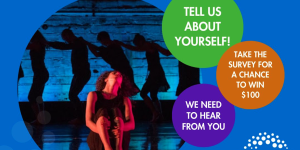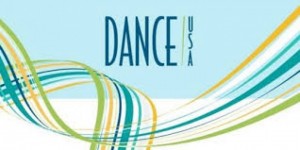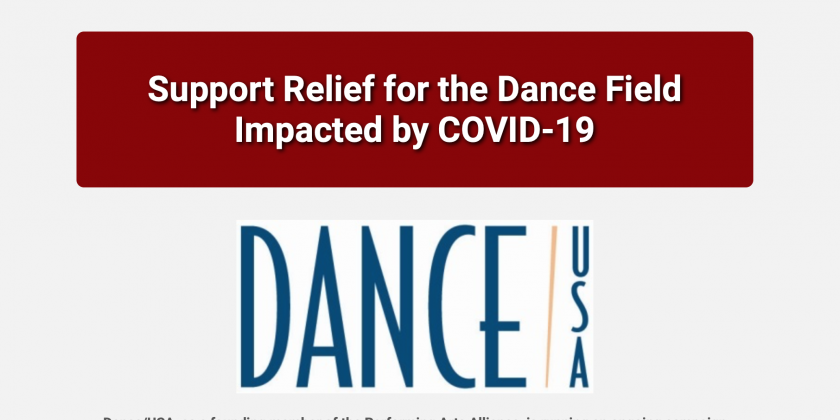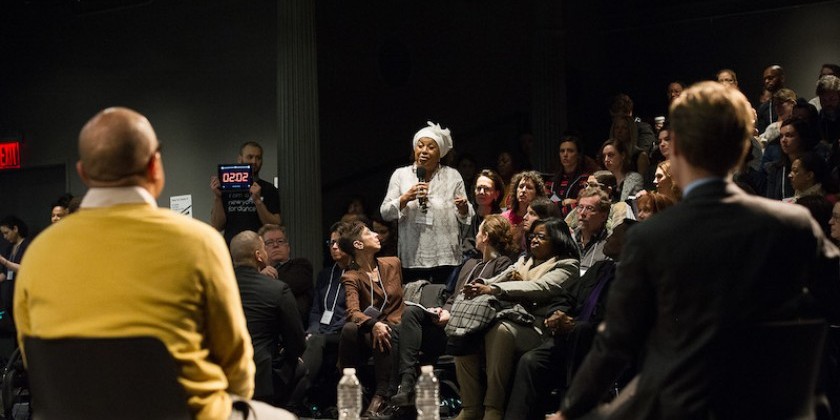Enthusiast Notes: DANCE/USA's Winter Forum 2009

January 30th and 31st at the 92nd Street Y- NYC, NY
AND A Dance Activist's (Recession, really anytime) To Do List
 One of the Topics of The Open Plan Meeting at The Dance/USA Winter Forum- Presented by Jen Abrams |
The focus of this past January’s Dance/ USA Winter Forum was human resources.
That means PEOPLE, people.
What is the dance world without people performing and choreographing? And how can the performers do their work without directors, presenters, stage crew, public relations, funders, board members, fans, doctors, lawyers and physical therapists fighting for and supporting them at every turn? How can we create a healthy respectful working atmosphere to benefit and bring the best out of every person in our field?
Most importantly how can we function and thrive in a time of economic turmoil?
I believe as they entered the meeting room at the 92nd Street Y some attendees thought this conference might be a wake for the art of dance.
But Terpsichore is still breathing.
For example:
Dr. Richard Gibbs, a former ballet dancer, spoke about his work leading The Task Force on Dancer Health, an historic initiative by Dance/USA to focus on providing better health care and awareness to professional dancers. Gibbs spoke from his experience as a young professional dancer –never going to the doctor, believing that he could do anything with his body, and feeling invincible. Then come the injuries. The Task Force seeks to break this pattern, providing professional dancers with tools to keep themselves healthy and providing the dance companies they work for with a way to understand the injury patterns and physical health needs of their company which in turn helps eliminate costs incurred due to dancer injury and absence.
The Task Force designed a thirty-minute screen to assess a dancers total health. The screen consists of a 20-minute physical assessment with a 10 minute consultation-offering dancers a summary of their health, with recommendations, and practical exercises. According to Dance/USA, “In the current season, there are 22 companies using the Screen. It is the first time in which companies from across the continent, in cooperation with the dancers’ union, have worked together to bring better health to those who dance for a living. It is a project where all parties (the companies, the dancers, the medical personnel and the union) are working side-by-side for the benefit of all.”a
Another shining light:
 Michelle Burkhardt, Director of Dance/NYC proposes a topic to discuss at The Dance/USA Winter Forum Michelle Burkhardt, Director of Dance/NYC proposes a topic to discuss at The Dance/USA Winter Forum |
A new pilot program called Engaging Dance Audiences that will enable Dance/USA members to explore and research new methods for engaging dance audiences and learning from peers. There are grants of 5,000. -50,000.00 available for projects. For more information visit
www.danceusa.org/engagingdanceaudiences or contact Suzanne Callahan, program manager, at callahan@ForTheArts.org
The two- day forum was filled with energetic meetings on topics created by participants. “What does next look like?” ,“ What are unconventional ways to present dance?”, “Dance in the Digital World”, “Copyright and Music”, “Dance Development meets Technology” and more. You will be able to find notes on these meetings by clicking the link below, looking under Winter Forum 2009 and finding the link for The Book of Proceedings.
http://www.danceusa.org/pastprofessionaldevelopmentevents
While it is alarming to contemplate what the future may hold it is heartening to remember that dance has always existed first and foremost because some individual body needed to create and move – there NEVER has been much money. We have always relied on our bodies, creative brains, and workhorse mentality to get us through.
Perhaps what we haven’t relied on for some time is each other.
When we speak of community outreach often we think of extending ourselves to non-dance communities to share the power of movement. What about sharing that power and energy within our community of dancers?
OK, but how you ask...
Here are some suggestions and examples of outreach for you to contemplate. Please take this list, add to it and pass it on.
A Dance Activist’s To Do List:
PLEASE ADD ON and PASS ON.
1. Ask your Members of Congress to support the American Recovery and Reinvestment Bill of 2009, which includes important benefits for the arts.
By raising your voice, you will be joining thousands of other advocates in the arts and non-profit communities calling for Congress to support the arts and our economic recovery.
(The Performing Arts Alliance posts alerts when your action is needed- This campaign will end February 28.2009)
http://theperformingartsalliance.org/campaign/AmericanRecoveryandReinvestmentBill
2. Come out of the closet -- about your career!
(This idea was grabbed from Peter DiMuro the director of Dance Metro /DC) Tell everyone what you do. Why you do it. How much you love it. Tell people on the train on the way to work. Tell your neighbors, and the guy who pours your coffee at the deli. Don’t be shy. Be a part of a grass roots effort to spread the message that dance is necessary, not an extra.
3. Support your colleagues.
Introduce a peer’s performances. Display/ distribute fliers for other concerts at your show. Share mailing lists etc. Endorse your friend’s class. (And An idea from Paul King, founder of White Bird in Portland, Oregon and Chair-Elect to Dance/USA) offer stubs from your tickets as discounts to other dance shows in the community.
4. Find ways to pool resources within our community- rehearsal space, office space, help with preparing concert activities. Where and how can you share? (Jen Abrams of WOW in NYC mentioned that this group has been working co-operatively for years...when someone performs, the other members of the group stage manage, etc. etc.)
For inspiration Check out the artist run Class Class Class http://classclassclass.org/ and Claudia La Rocco’s NYT article about artists getting together to teach and give each other class
http://www.nytimes.com/2009/02/01/arts/dance/01laro.html
5. Reach out to your neighborhood business associations-the people you deal with everyday where you live. Is there a way of working together that will benefit all concerned?
6. Join Dance/USA – The national advocacy group for our field. Anyone from a dance student to the director of a major performing organization can join and be included in activities and conversations that pertain to our future. Dance /USA is a tremendous source of information, research, opportunities and action ideas. Membership can be as low as 0.00 a year.
http://www.danceusa.org/
7. If you live in NYC, The DC Metro Area, or Philadelphia get involved with the Dance/USA branch offices in these cities.
http://www.dancenyc.org/
http://www.dancemetrodc.org/front/index.php
http://www.danceusaphiladelphia.org/














